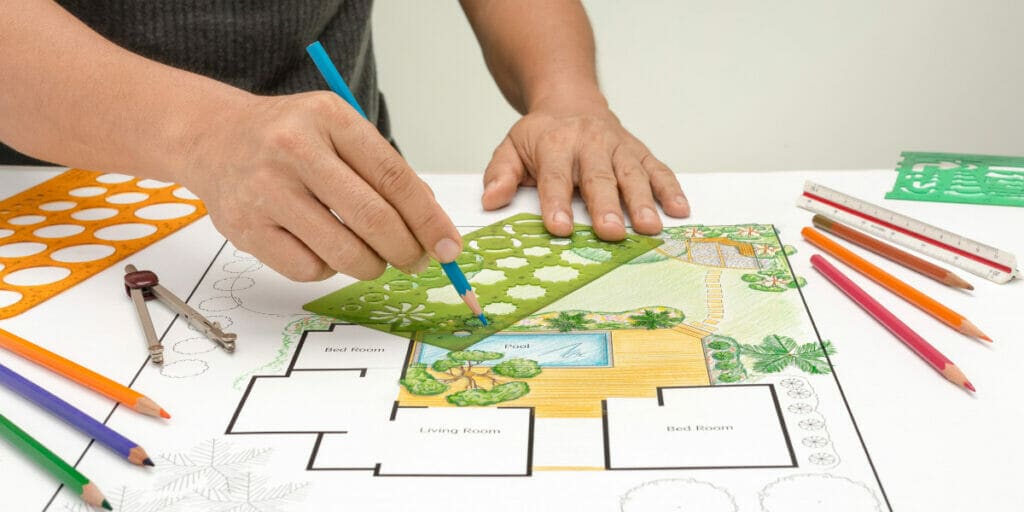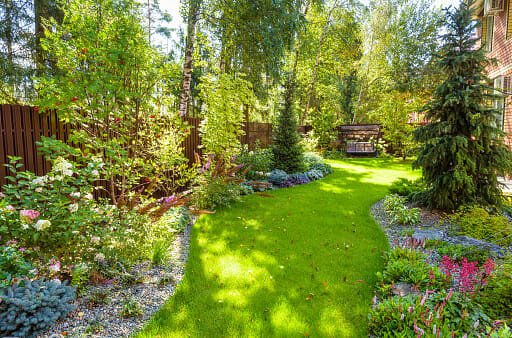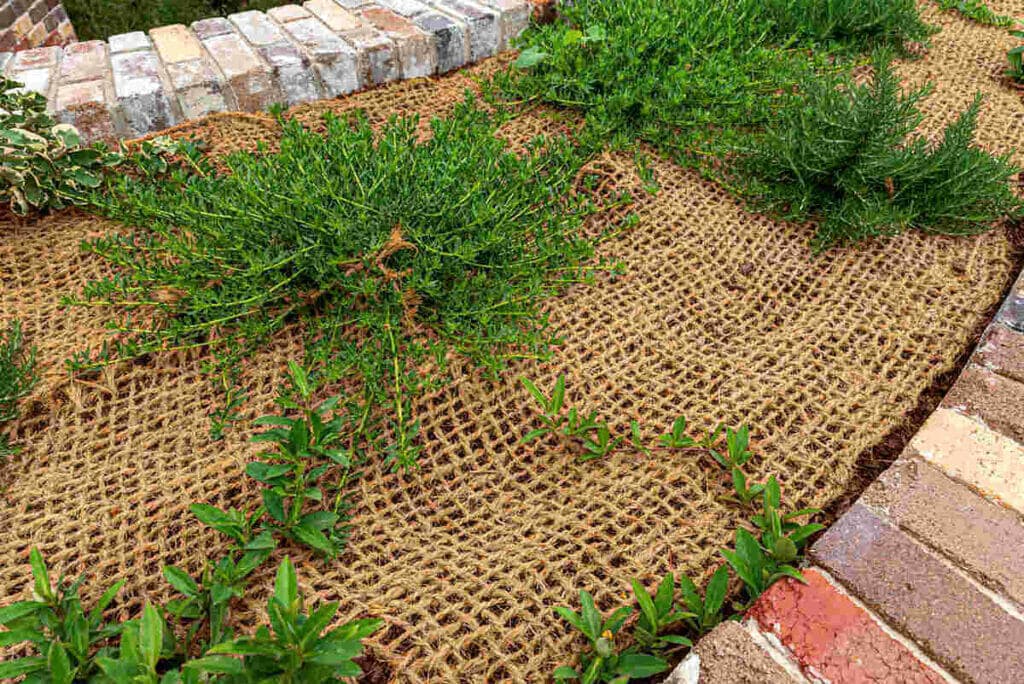Landscape Design‘s Priceless Contribution to Property Value
Property valuation is a critical aspect of real estate transactions, serving as the foundation for pricing, financing, and investment decisions. However, amidst the complex web of factors influencing property values, one element that often goes unnoticed is landscape design. While factors like location, size, and structural condition are routinely considered, the role of a well-thought-out landscape design can be underestimated.
Property valuation is not merely a financial assessment; it encapsulates the essence of a property’s worth within its ecosystem. Accurate valuation is pivotal for homeowners, investors, and real estate professionals, impacting decisions on listing prices, insurance premiums, and tax assessments. A property’s value is intricately intertwined with its environment, making it imperative to recognize the influence of landscape design on this intricate process.
Landscape design contributes significantly to a property’s aesthetic appeal, functionality, and overall ambiance. Yet, its potential to enhance property value must be more frequently underestimated. This article delves into how landscape design can be a subtle yet powerful factor influencing property valuation, shedding light on the often-neglected facet of real estate assessment.
The Aesthetic Appeal
-
- First impressions and curb appeal: The aesthetic appeal of a property plays a pivotal role in shaping first impressions. Curb appeal, mainly, is the immediate visual impact a property has on passersby and visitors. From manicured lawns to thoughtfully chosen paint colors, a well-maintained exterior can instantly captivate and engage observers. The power of first impressions must be balanced, as they often set the tone for one’s perception of the entire property. A charming facade and tidy front yard reflect pride of ownership and create a welcoming atmosphere for all who approach, making them more likely to explore further.
- How a well-designed landscape enhances aesthetics: Landscape design significantly contributes to the overall aesthetics of a property. Well-planned gardens, pathways, and outdoor spaces can transform a mundane yard into a captivating oasis. Thoughtful plant selection, hardscaping elements like patios or decks, and lighting can all combine to create a harmonious and visually appealing outdoor environment. The interplay of colors, textures, and natural elements in a landscape design can evoke emotions and sensations, further enhancing the property’s aesthetic allure.
- Attracting potential buyers: The aesthetic appeal of a property is a critical factor in attracting potential buyers. When a property exudes beauty and charm, it not only draws the attention of passersby but also entices real estate seekers. Homes with aesthetic solid appeal are often perceived as well-maintained and cared for, instilling buyer confidence. In a competitive market, aesthetics can be the differentiating factor that leads to a sale. Moreover, buyers often envision living in a home that resonates with their sense of beauty and style, making a visually pleasing property more appealing and valuable. In essence, the aesthetic appeal of a property is not just about its looks; it’s an invaluable asset in the realm of real estate.

Property Functionality
“Property functionality” refers to the practical and purposeful aspects of a property’s design and layout to enhance its usability and value.
Here are three critical aspects of property functionality:
- Outdoor living spaces and recreation areas: Well-designed outdoor living spaces, such as patios, decks, and kitchens, contribute significantly to a property’s functionality. These areas provide opportunities for relaxation, entertainment, and social gatherings, extending the usable space of a property beyond its interior. Functional outdoor spaces can include seating arrangements, fire pits, and even pools, creating a seamless transition between indoor and outdoor living.
- Functional garden and green spaces: Landscaping is vital in property functionality. Practical gardens, lawns, and green spaces offer aesthetics, recreational opportunities, and environmental benefits. Vegetable gardens, for instance, contribute to self-sustainability and fresh produce, while well-maintained lawns and greenery enhance the property’s curb appeal and provide space for various outdoor activities.
- Boosting the property’s overall utility: The functionality of a property is closely linked to its general utility. This includes storage space, well-designed kitchens, bathrooms, and other essential features that make everyday living convenient. Additionally, properties with efficient layouts that maximize space utilization contribute to their overall functionality and desirability.
Property functionality encompasses the thoughtful design and incorporation of outdoor living spaces, gardens, and greenery, as well as the optimization of interior spaces to enhance the property’s usability, comfort, and value. These elements collectively create a well-rounded and attractive living environment for property owners and potential buyers.
Property Maintenance
Property maintenance is a critical aspect of homeownership and real estate management, encompassing various facets that directly affect a property’s aesthetics, functionality, and financial standing.
- Low-maintenance landscaping: Effective property maintenance often begins with low-maintenance landscaping. This entails selecting plants, trees, and hardscape features that require minimal upkeep, such as drought-resistant plants or automated irrigation systems. A well-designed, low-maintenance landscape enhances the property’s curb appeal and reduces the time and effort needed for regular maintenance.
- Time and cost savings: Property maintenance, when performed consistently and efficiently, yields substantial time and cost savings in the long run. Regular inspections and minor repairs can prevent costly emergencies, while energy-efficient upgrades like insulation or LED lighting can reduce utility bills. Maintaining the property’s systems, like HVAC and plumbing, also helps extend their lifespan and avoid expensive replacements.
- The impact on property value: Adequate maintenance can significantly impact a property’s value. Well-maintained homes and landscapes tend to command higher prices in the real estate market. Furthermore, regular upkeep prevents deterioration and preserves the property’s structural integrity, ensuring it retains or increases its value over time. Neglecting maintenance, on the other hand, can lead to depreciation and make the property less appealing to potential buyers or renters.
Biodiversity and Ecosystem Services
Biodiversity and ecosystem services play a crucial role in maintaining the health and stability of our planet. Firstly, biodiversity is essential for creating habitats for wildlife. Diverse ecosystems provide various niches and resources that multiple species depend on for survival. When these ecosystems thrive, they support charismatic megafauna and countless microorganisms and lesser-known species critical to maintaining ecological balance.
Secondly, biodiversity contributes to improved air and water quality. Natural ecosystems, such as forests and wetlands, act as filters for air and water pollutants. Trees, for instance, absorb carbon dioxide and release oxygen, mitigating climate change and providing fresh air. Wetlands can purify water by removing contaminants and excess nutrients, ensuring clean water for human consumption and aquatic life.
Lastly, biodiversity is central to a healthier environment. It provides numerous ecosystem services like pollination, soil fertility, and disease regulation, which are fundamental to agriculture and human well-being. Moreover, diverse ecosystems are more resilient to environmental disturbances, such as extreme weather events and diseases, making them better equipped to adapt and recover.
The intricate web of biodiversity and ecosystem services is the foundation upon which life on Earth thrives. Recognizing and preserving these services is not just a matter of conservation but also of our survival and the well-being of future generations. Hence, safeguarding biodiversity and understanding its contributions to habitat creation, air and water quality, and a healthier environment is paramount for sustaining life as we know it.
Increased Privacy and Security
- Strategic planting for privacy: In the realm of increased privacy and security, strategic planting plays a pivotal role. Landscaping techniques can create natural barriers that shield properties from prying eyes and potential threats. Tall, dense shrubs, trees, and hedges act as living fences, enhancing the confidentiality of outdoor spaces. These green barriers obstruct the view and absorb sound, further safeguarding one’s privacy.
- Enhanced security through landscape design: Landscape design can be harnessed to bolster security measures. Thoughtful placement of lighting, such as motion-activated fixtures, illuminates potential blind spots, deterring trespassers and providing a heightened sense of security. Moreover, pathways and entry points can be designed strategically to guide visitors and deter unauthorized access. Integrating security systems into the landscape, like surveillance cameras discreetly nestled within the environment, adds an extra layer of protection.
- A sense of safety and peace of mind: These privacy and security enhancements ultimately translate into a profound sense of safety and peace of mind for homeowners and occupants. Knowing that their property is shielded from prying eyes and potential intruders allows individuals to relax and enjoy their outdoor spaces without worrying about security. This tranquility can positively impact mental well-being, promoting a sense of serenity and satisfaction in one’s living environment.
Property Valuation and Appraisal
- Landscape Design’s Impact on Property Valuation: Landscape design plays a significant role in property valuation. A well-maintained and aesthetically pleasing landscape can substantially increase a property’s value. Features such as manicured lawns, colorful gardens, and mature trees enhance curb appeal and create a positive first impression, potentially raising the property’s perceived value. Functional outdoor spaces like patios, decks, or swimming pools can add value by providing recreational opportunities and increasing overall utility.
- Appraiser Considerations: Appraisers evaluate various aspects of landscape design when determining a property’s value. They consider factors like the quality of materials used, the level of maintenance, and the overall design coherence. Appraisers also analyze how the landscape complements the property’s architectural style and contributes to its functionality and energy efficiency. Factors such as sustainable landscaping practices like water-saving irrigation systems and native plant choices can further influence property valuation.
- Real-Life Examples and Statistics: Real-life examples illustrate the tangible impact of landscape design on property values. Studies have shown that properties with professionally designed and well-maintained landscapes can command a 5-20% premium compared to similar properties with lackluster landscaping. For instance, a study by the National Association of Realtors found that well-designed landscaping can increase a home’s value by up to 12%. Moreover, properties with desirable outdoor amenities, like fire pits or outdoor kitchens, tend to sell faster and at higher prices.
Landscape design significantly affects property valuation, with well-maintained and thoughtfully designed landscapes adding considerable value to real estate. Appraisers must consider these factors when evaluating properties, and real-life statistics demonstrate the financial benefits of investing in landscaping for homeowners.

ROI on Landscape Investment
- Understanding return on investment (ROI): Return on Investment (ROI) is a critical metric used to assess the profitability and value of any investment. In landscape investment, ROI measures the financial gains or benefits of designing, installing, and maintaining a well-landscaped environment. It quantifies the return realized from the capital and effort invested in landscaping projects. Calculating ROI in landscaping involves considering the initial and ongoing maintenance expenses against the economic benefits generated over time.
- The financial benefits of a well-designed landscape: Investing in landscaping can yield significant economic benefits. A well-designed landscape enhances property aesthetics, curb appeal, and functionality, which can increase the market value of a property. This improvement often leads to higher property resale values and quicker sales. Additionally, a thoughtfully landscaped space can reduce energy consumption by providing natural shade and insulation, lowering utility bills. Moreover, businesses with appealing landscapes may attract more customers and generate higher revenues.
- Long-term value appreciation: One of the most substantial advantages of landscape investment is its long-term value appreciation. Landscapes mature and become more beautiful over time, further enhancing property values. Properly maintained landscapes also extend the life of buildings and infrastructure, reducing replacement and repair costs. Furthermore, a well-landscaped environment can positively impact the surrounding community, potentially attracting higher-end developments and investments, which can further contribute to overall property appreciation.
Conclusion
Promoting homeowners’ investments in landscaping initiatives is crucial for several reasons. Firstly, encouraging homeowners to invest in landscaping (point B) enhances their properties’ aesthetic appeal and contributes to environmental sustainability. Landscaping can include planting trees, shrubs, and native plants, improving air quality, reducing energy consumption, and providing habitat for local wildlife.
Secondly, the lasting impact on property value (point C) is significant. A well-maintained and thoughtfully landscaped property tends to command higher resale values in the real estate market. This can benefit homeowners financially in the long run, making it a wise investment.
Furthermore, landscaping has a profound effect on the overall quality of life. Beautiful outdoor spaces encourage outdoor activities, social int



